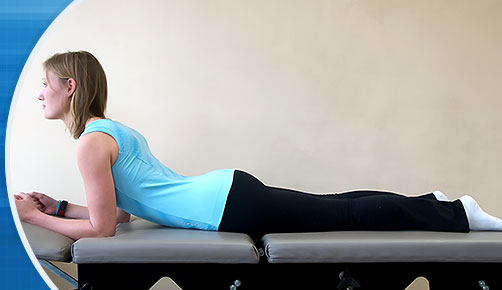How I Screwed Up My Back…..and What I Did About it
As anyone who reads this blog or knows me can attest, my back has been a mess in the past. But I guess that’s what happens when you dislocated your SI joint playing football, herniate three discs, and tear almost 2/3 of the quadratus lumborum muscle (Re: the big nasty that holds the place together) 10 years ago. It pretty much ruined any chance I had of going pro. But I’m not bitter.
 Now I’d love to say this was a made-for-tv movie where Kurt Cameron played my life story of overcoming adversity to battle back from a devastating injury to return to glory, but let’s face facts: I still have pain on pretty much a daily basis, and will probably develop arthritis at an early age as a result of it. I’ve tried getting back into playing competitive sports, but every time I get into a game, there goes righty, giving way and making me spend the next few weeks trying to walk without looking like I’m 60 and in need of a walker.
Now I’d love to say this was a made-for-tv movie where Kurt Cameron played my life story of overcoming adversity to battle back from a devastating injury to return to glory, but let’s face facts: I still have pain on pretty much a daily basis, and will probably develop arthritis at an early age as a result of it. I’ve tried getting back into playing competitive sports, but every time I get into a game, there goes righty, giving way and making me spend the next few weeks trying to walk without looking like I’m 60 and in need of a walker.
Now hope is not all lost, people. I can still do a bunch of cool stuff and move well in certain directions. The ones I have the most trouble with is any type of explosive rotation work or change of direction movements, which basically make up the majority of any of the fun sports out there. It’s come to the point where I know what I have to do to make a flare-up get better, and also how to prevent them (Re: not be stupid), but every now and then I have to start at square one and build it back up after doing something I shouldn’t have done, or after sitting for too long without a rest break, etc, etc. So I’m going to go through some of the things I do to help my back get back in shape, as it took me a number of years to figure out what worked best for me, I thought it might help fast-track someone who is in the same boat.
Now before we start looking at the exercises and progressions I used, I have to say that the vast majority of back injuries are going to resolve themselves, and in the case of disc herniations, as long as there’s no extruded fragments in the central canal, the timeline is about 6 months. Ask anyone who has had this type of injury and see if the thought of spending the next 6 months in pain and limited mobility sounds appealing and they’ll most likely answer you with a swift kick to your left scrotum.
ARVE Error: id and provider shortcodes attributes are mandatory for old shortcodes. It is recommended to switch to new shortcodes that need only url
So there has to be something to do to speed up the process. After reading countless books on the topic, I came up with a sequence that seems to do the job pretty well for me, as well as for the few clients with acute and sub-acute disc herniations I’ve worked with.
Step One: McKenzie and Positioning
Depending on the spine, most disc herniations are posterior-lateral in nature, meaning the nucleus moves through the annulus rings towards the back and one side of the spinal cord. This will cause the disc that normally angulates to the front to now angulate to the back, changing the persons’ posture into more of a hunch or slouched over posture, complete with posterior pelvic tilt. One of the best ways to counteract this is with passive positioning into extension and allowing the muscular spasms to reduce guarding of the vertebrae and discs, and allow the nucleus a chance to recede back into the disc, therefore reducing pressure on the spine and lateral nerve roots.
By spending about 5 minutes at a shot in this position, it allowed the muscles to relax and the disc to move anteriorly as much as possible. From there, performing a kneeling cat-camel stretch to try to reposition the spine and pelvic was the only thing that would allow me to stand and walk during a work day until the pain reduced enough to start doing some form of active mobility and re-training of the abdominal muscles.
Step 2: Don’t Stretch the Tight Muscles
The first thing that tended to cramp up on me was my hamstrings and glutes. the Last thing I wanted to stretch out was my hamstrings and glutes. As I’ve discussed in a previous post, stretching these during back pain will essentially reduce the stabilizing effect of these muscles for the spine, and increase the risk of having the vertebrae buckle and become further injured.I had to try to get some level of stability into the spine and supporting muscles to take the pressure off the hamstrings and glutes to help them settle down, so I started working on core stability.
ARVE Error: id and provider shortcodes attributes are mandatory for old shortcodes. It is recommended to switch to new shortcodes that need only url
To regain some of the mobility of the hips and upper spine while protecting the low back, I started going through some mobility drills.
ARVE Error: id and provider shortcodes attributes are mandatory for old shortcodes. It is recommended to switch to new shortcodes that need only url
Step 3: Get Back Gradually
After a week or so of doing this daily, my back will normally feel good enough to start moving and lifting light weights, and eventually progress into heavier weights. I use a simple system of deciding whether I can move on to light weights or heavy weights. For light weights, If I can move through the full available range of motion, with or without pain, I start doing light weights. When I can move through the full available range of motion pain-free, and can do light weights with no loss of function the following day, I can start doing heavier weights.
My last major flare-up came last March, when I went to the NSCA conference in Las Vegas, and took a seminar with Todd Durkin, believed I was Superman, and went full speed into foot work drills. Of course, I tore up the carpet in that place, and I can assure you Todd never saw a 240 pound Canadian do a carioca like that. I was like freakin Fred Astaire wearing Under Armour in the absolute sexiest way possible!!!
 But then I felt the disc slip, and was on the shelf after 10 minutes.
But then I felt the disc slip, and was on the shelf after 10 minutes.
Epic fail for me.
It took 2 months and a half-dozen chiropractor appointments and massage therapy sessions to get me to sit up and roll out of bed in the morning without shooting pain. I’ve never been one to complain about soreness or pain, and I think it drives Lindsay nuts some times, but there were definitely days that were close to unbearable.
That was in March. This was in November:
ARVE Error: id and provider shortcodes attributes are mandatory for old shortcodes. It is recommended to switch to new shortcodes that need only url
and this was December:
ARVE Error: id and provider shortcodes attributes are mandatory for old shortcodes. It is recommended to switch to new shortcodes that need only url
I decided to take some time off from heavy heavies for a few months to make sure I don’t over-stress the area, and will attack it again in March. My goal is over 400 pull from the floor, which in my mind will be a major victory over my injury in less than a year from the last big tweak.
Hopefully this helps one or two of you out there. This is one of the reasons I love working with injury rehabilitation clients, because I have an understanding of what they’re going through, how frustrating it is, and how amazing it can feel to get over an injury and start to “feel normal” or as normal as possible again. Let me know if you’ve overcome any serious injuries in the comments sections, and you might help to inspire someone else who is struggling with a similar injury and give them the motivation to keep on fighting.

26 Responses to How I Screwed Up My Back…..and What I Did About it